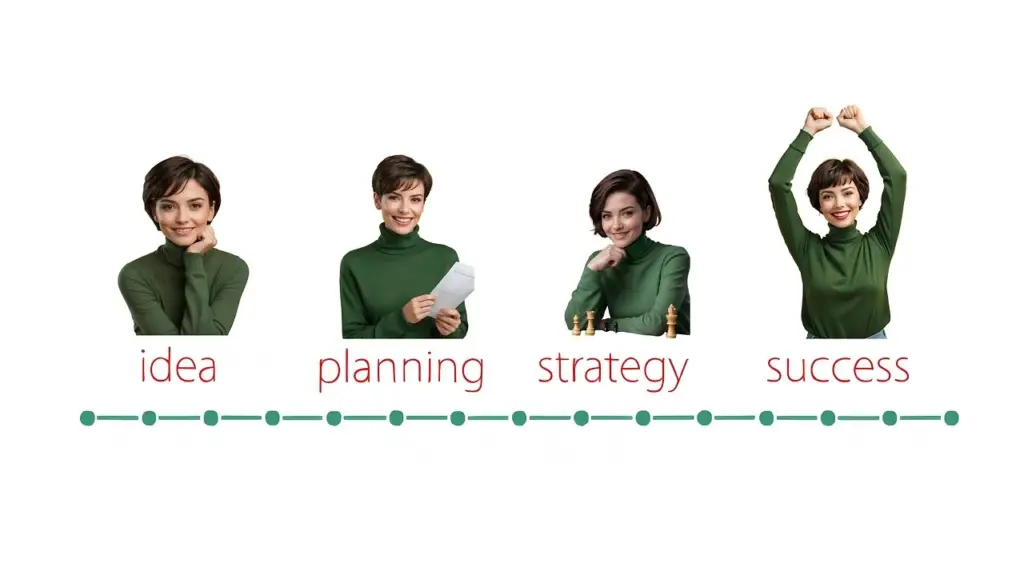Elevating Your Boutique Business: A Strategic Approach to Project Management

In the world of fashion and retail, boutique businesses occupy a unique niche, offering curated collections, personalized service, and a distinctive shopping experience. Whether you’re launching a new boutique or looking to revitalize an existing one, implementing a comprehensive work action plan and effective project management strategies is crucial for success. Let’s explore how boutique owners can harness the power of strategic planning to drive growth and profitability.

Page Contents
- 0.1 Setting the Stage: Conceptualization and Vision
- 0.2 Designing the Experience: Store Layout and Merchandising
- 0.3 Curating the Collection: Product Selection and Sourcing
- 0.4 Building the Team: Hiring and Training
- 0.5 Marketing and Promotion: Generating Buzz and Driving Traffic
- 0.6 Grand Opening and Launch: Making a Splash
- 0.7 Ongoing Operations and Management: Sustaining Success
- 0.8 Customer Engagement and Relationship Building: Cultivating Loyalty
- 1 Table 1- Action Plan and Strategies for Effective Project Management
- 2 Here’s an example of a work action plan and strategies for effective project management tailored to a boutique business, presented in a table format:
- 3 Table 2- Budget Plan and Estimated Cost
- 4 Here’s an example of a startup budget plan for a boutique business presented in a table format:
- 5 Conclusion
Setting the Stage: Conceptualization and Vision

Before diving into the details, it’s essential to define your boutique’s concept, brand identity, and target market. Consider factors such as style aesthetic, price point, and customer demographics. Conduct market research to identify trends, competitor analysis, and customer preferences. Use this insight to develop a unique selling proposition (USP) that sets your boutique apart and resonates with your target audience.
Designing the Experience: Store Layout and Merchandising
The layout and ambiance of your boutique play a significant role in shaping the customer experience. Carefully design your store layout to optimize traffic flow, highlight key merchandise, and create inviting display areas. Pay attention to lighting, decor, and signage to enhance visual appeal and reinforce your brand image. Implement effective merchandising strategies, such as color coordination, storytelling, and focal points, to captivate customers and encourage purchases.
Curating the Collection: Product Selection and Sourcing
The success of a boutique hinges on its merchandise selection. Curate a diverse yet cohesive collection of products that align with your brand’s aesthetic and cater to your target market’s preferences. Develop relationships with reputable suppliers, designers, and artisans to source unique and high-quality merchandise. Negotiate favorable terms, including pricing, minimum order quantities, and delivery schedules, to ensure a steady supply of inventory.
Building the Team: Hiring and Training
A knowledgeable and motivated team is essential for delivering exceptional service and fostering customer loyalty. Define staffing requirements based on your boutique’s size, operating hours, and customer service standards. Recruit individuals who embody your brand values, possess relevant experience, and demonstrate a passion for fashion. Provide comprehensive training on product knowledge, styling techniques, and customer interaction to empower your team to deliver a personalized and memorable shopping experience.


Marketing and Promotion: Generating Buzz and Driving Traffic
Effective marketing is key to attracting customers and building brand awareness in a competitive market. Develop a multi-channel marketing strategy that leverages both digital and traditional channels. Utilize social media platforms, email marketing, influencer collaborations, and local events to engage with your target audience and drive traffic to your boutique. Implement creative promotions, exclusive offers, and loyalty programs to incentivize repeat purchases and foster customer loyalty.
Grand Opening and Launch: Making a Splash
Your boutique’s grand opening is an opportunity to make a memorable first impression and generate excitement in the community. Plan and execute a launch event that reflects your brand’s personality and showcases your merchandise. Consider hosting a VIP preview, offering exclusive discounts, or partnering with local influencers to amplify your reach. Create a visually stunning storefront display and leverage social media to build anticipation and drive foot traffic to your launch event.

Ongoing Operations and Management: Sustaining Success
Once the initial excitement subsides, focus on maintaining momentum and delivering consistent experiences to your customers. Implement efficient systems and processes for inventory management, sales tracking, and customer service. Monitor key performance indicators (KPIs) such as sales trends, inventory turnover, and customer satisfaction scores to identify areas for improvement and inform strategic decisions. Continuously innovate and evolve your boutique to stay relevant and competitive in the ever-changing retail landscape.
Customer Engagement and Relationship Building: Cultivating Loyalty
Building strong relationships with your customers is essential for long-term success. Foster a sense of community and belonging by engaging with your customers both in-store and online. Personalize the shopping experience by offering styling consultations, hosting trunk shows, and sending personalized follow-up emails. Solicit feedback from your customers and use their input to tailor your merchandise selection, marketing campaigns, and overall shopping experience to their preferences.
Table 1- Action Plan and Strategies for Effective Project Management
Here’s an example of a work action plan and strategies for effective project management tailored to a boutique business, presented in a table format:
| Task | Description | Strategy |
|---|---|---|
| Concept Development and Branding | Define the boutique’s concept, brand identity, and target market. Develop a unique selling proposition (USP) that sets the boutique apart. | Conduct market research to identify trends, competitor analysis, and customer preferences. Create mood boards, brand guidelines, and visual identity to reflect the boutique’s personality. Collaborate with designers and marketers to develop a compelling brand narrative. |
| Location Selection and Store Design | Identify a suitable location for the boutique and design an inviting and visually appealing store layout. | Scout potential locations based on foot traffic, demographics, and competitor presence. Work with architects and interior designers to create a layout that optimizes space, highlights key merchandise, and enhances the customer experience. Consider factors such as lighting, decor, and signage. |
| Product Selection and Sourcing | Curate a curated collection of merchandise that aligns with the boutique’s brand aesthetic and target market preferences. | Develop relationships with designers, wholesalers, and artisans to source unique and high-quality merchandise. Negotiate favorable terms and agreements, including pricing, minimum order quantities, and delivery schedules. Conduct regular market analysis and trend forecasting to inform product selection. |
| Staffing and Training | Recruit and train a knowledgeable and customer-focused team to deliver exceptional service and uphold brand standards. | Define staffing needs based on the boutique’s size, operating hours, and customer service standards. Conduct interviews and selection processes to hire individuals who embody the brand values and possess relevant experience. Provide comprehensive training on product knowledge, styling techniques, and customer interaction. |
| Marketing and Promotion | Develop and implement a multi-channel marketing strategy to build brand awareness and attract customers to the boutique. | Utilize digital and traditional marketing channels, including social media, email marketing, influencer partnerships, and local events. Create engaging content, such as lookbooks, tutorials, and behind-the-scenes footage, to connect with the target audience. Offer promotions, exclusive offers, and loyalty programs to incentivize purchases. |
| Grand Opening Event | Plan and execute a memorable grand opening event to introduce the boutique to the community and generate excitement. | Coordinate logistics, such as event venue, catering, entertainment, and guest list. Create visually stunning storefront displays and promotional materials to attract attention. Leverage social media and local press coverage to build anticipation and drive foot traffic to the event. |
| Ongoing Operations and Management | Implement efficient systems and processes to manage inventory, sales, and customer interactions on a day-to-day basis. | Invest in POS systems, inventory management software, and CRM tools to streamline operations and enhance efficiency. Establish standard operating procedures (SOPs) for inventory management, sales tracking, and customer service. Monitor key performance indicators (KPIs) and customer feedback to identify areas for improvement and inform strategic decisions. |
| Customer Engagement and Retention | Cultivate strong relationships with customers and foster loyalty through personalized interactions and exceptional service. | Offer personalized styling consultations, exclusive events, and VIP perks to reward loyal customers. Implement customer loyalty programs and referral incentives to encourage repeat purchases and word-of-mouth marketing. Solicit feedback from customers and actively listen to their needs and preferences to tailor the shopping experience accordingly. |
This action plan outlines key tasks and strategies for effectively managing a boutique business, from concept development and branding to ongoing operations and customer engagement. Customization may be necessary based on the specific requirements and characteristics of the boutique.
Table 2- Budget Plan and Estimated Cost
Here’s an example of a startup budget plan for a boutique business presented in a table format:
| Expense Category | Description | Estimated Cost (USD) |
|---|---|---|
| Location Costs | Rent or lease payments for the boutique space, security deposits, and any renovation expenses. | $20,000 |
| Store Setup and Decor | Fixtures, shelving, display racks, lighting, flooring, signage, and interior decor. | $15,000 |
| Inventory | Initial inventory of merchandise, including clothing, accessories, and other products. | $30,000 |
| Equipment and Supplies | Point-of-sale (POS) system, cash register, hangers, garment racks, shopping bags, and packaging materials. | $10,000 |
| Marketing and Promotion | Website development, branding materials, signage, advertising, and promotional events. | $10,000 |
| Professional Services | Legal fees, business registration, accounting services, and consulting fees. | $5,000 |
| Utilities and Insurance | Monthly expenses for electricity, water, internet, insurance (property and liability), and permits. | $7,000 |
| Staffing Expenses | Payroll costs for hiring and training staff members, including salaries and benefits. | $15,000 |
| Contingency Fund | Reserve fund for unexpected expenses or emergencies. | $5,000 |
| Total Estimated Startup Costs | $117,000 |
This startup budget plan provides a comprehensive overview of the estimated costs associated with launching a boutique business. It’s important to note that actual expenses may vary based on factors such as location, size of the boutique, and specific business requirements. Additionally, it’s advisable to consult with financial advisors or industry experts to ensure accuracy and feasibility of the budget plan.
Conclusion
By implementing a strategic work action plan and effective project management strategies, boutique owners can navigate the complexities of the retail landscape and create a thriving business that delights customers and stands the test of time. With passion, creativity, and a clear vision, the possibilities for success in the boutique industry are endless.






